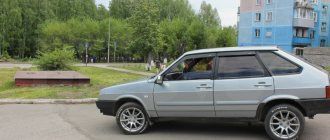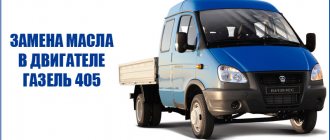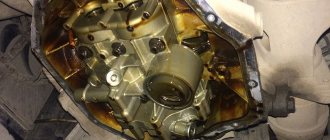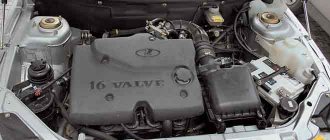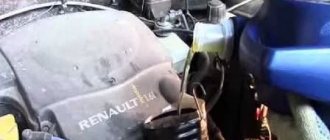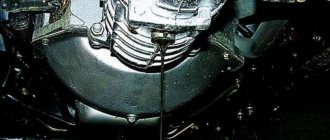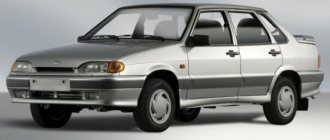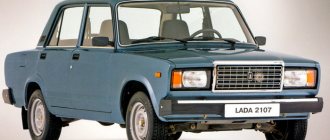The ZMZ 409 engine was first produced at the Zavolzhsky Motor Plant in 1996. The injector system present here receives commands from the electronic unit. The amount of oil that is poured into the ZMZ 409 engine is 7.0 l. The unit was created on the basis of ZMZ-405 with a volume of 2464 cm3. The new engine with index 409 is made larger. Its volume is 2693 cm3. Oil circulation in some places is accompanied by forced injection. The engine can develop power up to 143 hp.
The resource of the unit is designed for 150,000 km, but with proper maintenance it can be increased to 250,000. Now the following engines are installed:
- UAZ Patriot;
- Leopard;
- Hunter;
- Pickup;
- Simbir.
Bukhanka, which is found on the roads of the Russian Federation, is no exception.
Ash content
This parameter determines the amount of metal-containing additives, in other words, the amount of ash that remains after complete burning (evaporation) of the oil. Oils are full-ash - with a full package of additives, this is indicated on the canister as Full Saps, or according to the ACEA classification: A1, B1; A3,B3; A3, B4; A5, B5.
Medium ash oils (reduced additive package) are designated on the canister as MID SAPS, or according to ACEA: C2/C3. Low-ash oils have an even smaller additive package; they are designated as Low SAPS or ACEA C1/C4.
Why is ash content reduced? High sulphate ash content is not allowed in most modern cars due to European exhaust emission standards. Such oils are less likely to clog particulate filters and catalysts, and are also less likely to deposit on pistons and rings.
The UAZ Hunter uses engines that are simple in design, so you can safely use medium-ash and even full-ash oils if you don’t want to overpay.
Maintenance of UAZ vehicles
In order for the car to serve faithfully for many years, it is necessary to perform timely maintenance of the car. Any prudent car owner should know the above data on refueling volumes by heart.
Service centers often employ incompetent personnel, and the cost of their services is unreasonably high. Therefore, the best solution would be to do the maintenance of the machine yourself. To do this, you need to know not only the filling volumes, but also the timing of replacement of lubricants and liquids.
For example, let's say you're the proud owner of a manual-transmission Patriot. This car requires servicing once a year or every 7,000 km. To carry out maintenance on your own, you will need to replace the lubricants in the internal combustion engine, manual transmission, manual transmission, axles, as well as oil and fuel filters if necessary.
There is quite a lot of work to be done. First you need to change the engine oil in the engine and change the fuel filter. The replacement process takes place on a warm machine - it’s faster and more efficient.
The algorithm of actions is as follows:
- The filler and drain plugs are unscrewed. Hot oil is poured into a container.
- Use a wrench to remove the oil filter.
- The drain plug is lubricated with sealant and screwed into place.
- A new filter is being installed.
- The filler plug is screwed in.
It is important to note that when changing the type of oil, after draining the waste, flushing fluid is added. Otherwise, there is a risk of engine failure.
To carry out maintenance correctly, you need to know how much oil you need to pour into your car. The fact is that the volume of oil in the UAZ Patriot engine depends on the type of fuel. A gasoline engine will need to be filled with 7 liters, a diesel engine will need to be filled with 6.5.
After the internal combustion engine, we move on to the manual transmission and manual transmission. Transmission lubricant is also drained from a heated car. In principle, the algorithm for changing the lubricant on the gearbox and transfer case is similar to that presented above.
The same lubricant is used for manual transmissions and manual transmissions. The required volume will be about 5 liters of liquid. It is advisable to choose a lubricant with high viscosity, this will ensure uninterrupted operation of the car at low temperatures.
Changing the oil in axles occurs only after preliminary cleaning of the surfaces around the filler and drain holes. If this procedure is not followed, dust particles and metal shavings will enter the system. The plugs also need cleaning. The lubricant itself is filled with a syringe until the system overflows.
So, having completed the work listed above, you will spend about three hours of your time. At the same time, you will save money on the services of the service center, and most importantly, you will know that the service was performed efficiently and the vehicle is insured against unwanted breakdowns.
Engine ignition installation
An ignition device used in a power plant, a product without which the operation of the engine is impossible. The correct operation of the engine and the combustion of the fuel charge are directly related to how to install the ignition on the UAZ 421 engine. Since hydraulic valve compensators are not structurally provided, manual adjustment is carried out, providing:
- Installation of the shaft in accordance with the advance angle of five degrees. Align the middle marking of the friction wheel with the influx of the core plug on the compression in chamber “1”;
- Find out the compression stroke of the chamber “1” by removing the plug. In this case, the slider is located against the inner contact surface of the plug, connected by a conductor to the spark plug of chamber “1”. An alternative definition based on the candle in chamber “1” involves dismantling the product. The resulting void is closed with a paper plug, and then the shaft is turned. On the compression stroke, the plug will come out of the hole;
- Using the “tenth” key, slightly unscrew the octane regulator;
- Set the octane regulator calibration to “0”, corresponding to the middle of the calibration;
- Using the “tenth” key, slightly release the octane regulator plates;
- Align the rotor mark (red marker) with the stator arrow by turning the distribution sensor frame. Fix the location by tightening the fasteners;
- Check the position of the slider (against the contact of the plug of the 1st chamber), check the correct connection of the conductors leading to the chambers. The countdown starts from camera “1”, counterclockwise, in the order “1st, 2nd, 4th, 3rd”.
The ignition operation must be additionally monitored while driving the vehicle. Briefly press the foot speed lever to full speed, having previously accelerated the car to a speed of 60 kilometers per hour. Detonation for 1-3 seconds indicates that the settings are correct. Longer - the advance angle is exceeded, no detonation - the advance angle is insufficient. In the last two cases, the setting is repeated.
Site about off-road vehicles, SUVs, off-road vehicles
The lubrication system of UAZ-3741, UAZ-3962, UAZ-3909, UAZ-2206, UAZ-3303 vehicles with carburetor engines UMZ-4178, UMZ-4179, UMZ-4218, ZMZ-4021 and ZMZ-4104 is combined; parts are lubricated under pressure and splashing.
Lubrication system for UAZ-3741, UAZ-3962, UAZ-3909, UAZ-2206, UAZ-3303 with UMZ and ZMZ engines.
The lubrication system of UMZ and ZMZ engines consists of an oil pump, an oil receiver, oil channels, a full-flow oil filter, an oil cooler, an oil sump, an oil level indicator and an oil filler neck. The capacity of the lubrication system, excluding the volume of the oil cooler, is 5.8 liters. If there is a malfunction in the lubrication system, engine operation must be stopped immediately.
An oil cooler is provided in the lubrication system to cool the oil. When the air temperature is above +20 degrees and regardless of the air temperature, when driving in difficult conditions, with a heavy load and high engine speed, it is necessary to turn on the oil cooler.
Diagram of the lubrication system for UMZ-4178, UMZ-4179, UMZ-4218 engines.
Diagram of the lubrication and crankcase ventilation system of the ZMZ-4021 and ZMZ-4104 engines.
Oil sump.
Steel, attached to the bottom plane of the block with studs. When carrying out repair work, it is necessary to keep in mind that the left front pin screwed into the timing gear cover is special. It is screwed in to a shallow depth so as not to jam the camshaft gear. The crankcase flange is sealed with rubber-cork gaskets.
List of car models in which it was installed
Until 2005, most of the internal combustion engines of the Ulyanovsk Motor Plant were used by several car manufacturers. The UMZ 421 engine, which equipped the vehicles, was no exception:
- SUVs UAZ Hunter, Patriot, Bars, 3160,3161;
- all-terrain vehicle Simbir 3162, Tiger 2330;
- Pickup trucks, Cargo, 39095;
- minibuses 2206, 3303, 3741, 3909, 3962, Simba 3165;
- onboard Gazelle 3302;
- cargo-passenger Gazelle Farmer 33023;
- frame vans GAZ 2705;
- minibuses Gazelle 3221;
- vans and minibuses Sobol 2217;
- minivans Barguzin 2217.
Bus GAZ Simba
For two plants, the engine characteristics were ideal, but for the Gazelles the radiator and fan had to be moved in height.
Advantages and disadvantages
Traditionally, for any family of engines, the weakest is the basic version, in this case, 4218.10. The disadvantages of the motor are:
- low quality metalworking;
- leaks of coolant, oil from the block, cylinder head and mixing of working fluids;
- outdated timing and drive circuit;
- increased consumption of fuel and lubricants;
- adjusting the thermal clearance of the valves every 15,000 miles.
On the other hand, the motor has many more advantages:
- factory tuning by boring cylinders up to 100 mm to increase performance;
- modernization of the exhaust stroke by combining the exhaust pipe, exhaust manifold and resonator into a single unit;
- the ability to make major repairs yourself;
- forcing the intake tract to increase power;
- a normal rubber seal instead of stuffing with a cord on the rear crankshaft support;
- service life from 250,000 km.
Intake manifold
For example, the designers used the cylinder head from the 417 internal combustion engine model, and the combustion chamber was enlarged due to the design of the piston, in which a cone-shaped recess was milled.
Engine Modifications
Trying to eliminate the shortcomings, the designers constantly refined and corrected the unit. As a consequence, fixation of changes led to the appearance of modifications of the model, the performance characteristics of which differed.
The base engine “4218.10”, which became the basis for the rest of the modifications, had a defect due to which coolant penetrated into the oil through aluminum pores. It was not possible to eliminate the defect by replacing seals and gaskets. The designers used the technology of impregnating the frame with resin, after which the defects disappeared, and the modification received the marking “421.10”.
In order to increase the impulse at lower speeds and the power of the unit, an improved resonator was supplied to the product and the compression ratio in the combustion chamber was increased. Modification “421.10-30” after modification is installed on the Gazelle car. The same engine with a modernized power supply and exhaust gas removal mechanism is marked as “4215.10-30”.
In order to reduce fuel costs, UAZ engines used for buses and trucks began to be converted to fuel with a lower octane number “A-76” (“4215.10-10”).
The appearance of the UAZ 421 engine injector, which was intended for installation on vehicles with all-wheel drive, led to the creation of a new modification “4213.10”. A special feature of the engine is the use of a cast iron camshaft, which made the modification stand out in comparison with a carburetor product. The same motor with a modified fan drive was installed on the Gazelle, product identifier “4216.10”.
Types of UAZ with carburetor (421...):
| Designation | Explanation |
| …8.10 | Base, A-76, compression 7, 98 horses, Euro-1; |
| …8.10-10 | Analogue “...8 .10”, AI-92, compression 8.2, 103 horses; |
| ….10 | Analogous to “...8 .10”, with a modified release; |
| ….10-30 | Analogous to “...8.10-10”, with a modified release; |
| …3.10-40 | Analogue “….10-30” with an injector, environmental standards “Euro-3”, 117 horses; |
| …3.10-50 | Analogue “...3.10-40”; |
| …5.10-10 | Analogous to “...8.10”; |
| …5.10-30 | Analogue “...8.10-10”; |
| …6.10 | Analogue “...5.10-30” injector, AI-92, compression 8.8, 123 horses, Euro-3; |
| …61.10 | Analogue “...6.10”, 99 horses; |
| …64.10 | Analogous to “…6.10”, different camshaft, 125 horses, “Euro-4”; |
| …647.10 | Analogue “...64.10”, gas and gasoline, 100 horses; |
| …67.10 | Analogue “...6.10”, gas and gasoline, 123 horses; |
| …61.10 | Analogue “...6.10”, 99 horses. |
Frequency of motor monitoring and adjustments
When calculating the power plant, the designers determined the operating life of the unit at the level of 250,000 km. To achieve the specified period, the following is configured and adjusted:
- 10,000 km: change the oil filter and engine lubrication;
- 15,000 km: valve adjustment 421 engine;
- 20,000 km: control and replacement of exhaust, pipes, belts, spark plugs, battery, etc.;
- 30,000 km: change the air filter, check the pan ventilation;
- 40,000 km: change the cooler and fuel filter;
- 60,000 km: oxygen sensor monitoring.
Replacing the oil filter:
The same deadlines for the work are observed after the overhaul, regardless of how many manipulations are performed. For engines running on gas and gasoline, seals are replaced more often. You can also read about the UAZ Patriot Razdatka.
Help information for maintenance
In order not to search for how much/where/what to upload, as well as when and what to change as planned, I will maintain and supplement this article... This is my own experience, so it may not coincide with yours :) There won’t be much copy-paste from other blogs here, basically what I came to myself. I think someone will also find this article useful as a reference
Information on oils
1) Gearbox
—-
Replacement interval 45
thousand.
—- Oil volume is no more than 3
liters (according to Murzilka 2.5).
—- Oil brand ZIC G-FF 75W-85 (GL4)
—-Note: what the manufacturer himself recommends.
No complaints, excellent oil, quite clean after replacement 2) Transfer case (on the handle)
—-
Replacement interval is 45
thousand.
—- Oil volume 0.8
liters —-
Oil brand Chevron 80w90
(gl4-gl5) —-Note: my transfer case is snotty all the time, replacing the gaskets didn’t help, and I think it’s not economically feasible to go through the process while it’s working properly :) so my choice - diagnostics every 10k mileage and topping up.
For 10k, an average of 200g is sprayed out of it. 3) Bridges
—-
Replacement interval 45
thousand.
—- Oil volume,
front
1.6
liter, rear
1.4
liters —-
Oil brand Chevron 80w90
(gl4-gl5) — chevron is filled now, everything is ok.
Before that there was Mobil 75w-90. also proved to be excellent, did not leak, did not eat the oil seals... If you pour the same oil into the transfer case as into the axles, then one 4-liter canister will be 100% enough for simultaneous replacement in 3 units! 4) Engine
—-
Replacement interval 8-10
thousand.
—- Oil volume
is less than
7
liters (although the total volume is larger, but without removing the oil radiator, about 6.5 liters are actually required) —-
Oil brand Mobil Super 2000 10w40 added 04/16/2018
—-
Oil brand lukoil genesis armortech 5w-40
- now switched on him. IMHO it’s much better than mobile because it’s more liquid in cold weather. I like it so far.
—-Note It is extremely important to consider the engine hours! If it’s only the city all the time, then at least once every 8 thousand. Because if you translate standing in traffic jams into mileage, then it will be 2 times more... With trips mainly around the city, by 7-8 thousand, semi-synthetics begin to lose their properties and burn. After this run, you need to carefully monitor the level, it may begin to drop sharply. At the same time, if trips around the city often alternate with trips on the highway/out of town/in nature, before and for 10k the level will practically not decrease... For myself, after the last maintenance, I decided to change it every 8k... 5) Power steering system
—-
Replacement interval 45
thousand.
—- Oil volume
no more than
1
liter —-
Oil brand Zic atf II
or any other category
dexron ii
(like 3 is possible) — Note: Do not forget when replacing the power steering filter from Kamaz
4310-3407359-10
Injection of cardan shafts
Every oil change.
(at least once every 10 thousand) it would be nice to syringe the crosspieces, but you can’t get close to mine. I've seen crosses on the Internet with an oiler from the end, and not from the side. When I change it I’ll try to buy exactly these ones added...found :) BTL0024CJ BAUTLER
Air filter
you need a large Gazelle Replacement every oil change. (at least once every 10k) If you don’t do this and change it according to the service book, it gets clogged and increases consumption by 2-3 liters
Cabin filter
Once every 10-20 thousand mileage, more often is better :)
Engine Maintenance
Rollers and belt: on average, replacement interval is once every 50 thousand.
INA 531-0759-10 bypass rollers, INA 532047910 tensioner
(or slightly larger in diameter and narrower INA 531-0760-10) more information about the rollers here www.drive2.ru/l /9902204/
Belt bosch 1987947833
(just in case, I have ZMZ409 euro3, what’s on Ivek and the rest I don’t know :)
Spark plugs
- Brand: Engels AU17DVRM
they say they run on gas (1mm gap), they seem to run fine on petrol too)
Steering tips
—Brand:
ADS expert.
—Type:
Three right, one left.
—Note: The manufacturer claims 100k mileage. I confirm that I have completed 100 thousand and are still alive. In the near future I will simply change it as planned. I’ll just have 4 anthers to spare :) Although I must say, no matter where I climbed, I didn’t tear a single one of them in the forest, although I was afraid at first... So the thing is excellent, with the standard ones, which need to be pulled out every 5 thousand , no need to even compare
Shock absorbers
I have entries in my blog about different ones, but from what was there, to be very humble, I liked
the Front
hola s452 (oil)
Rear
hola s461 (oil) (shock absorbers are normal, but I always take bushings for shock absorbers separately)
Silent blocks and bushings
ONLY from Novosibirsk polyurethane! It is reinforced concrete. It can withstand my use in forests for up to 100 thousand km, while my standard rubber bands last on average about 10 thousand... I always order from them directly from their website: Here is the link to the kit www.polyurethan.ru/produc...ii-s-2007- goda-14-21-004/ I didn’t buy it all at once, but in parts, especially since I needed bushings for the bar springs instead of silent blocks...
Gas equipment
(useful for yourself and for those who have the same thing)
Brains Digitronic 4 maxi
, diagnostic program
Digitronic-DGI-8.0.0.1
Important: now the digitronic has been purchased by Stag and whoever has a diagnostic cable from the digitronic, keep in mind that it will not fit straight away to Stag .
However, they say that only 2 power wires were swapped there, so of course there is no need to buy a new one. You can make it on the mother-to-mother connectors so that one cable fits different brains, simply by connecting the wires... injector ramp
Poletron F-1.8
ramp of this type secgas.ru/ komplektuyushch…sunki-poletron-f-1-8-4cil is supposedly a complete analogue of Hana.
Does not require calibration, unlike serviced ones, and should ensure more economical and stable operation of the engine after 100 thousand miles, my Valtek injectors required a rebuild, the engine began to run unstable, but their repair and complete rebuild cost me only 400 rubles www.drive2.ru/l/458822355054061493 / Gas reducer tomasetto alaska at-09. Before the bulkhead (provided that I refuel at normal gas stations) it will take at least 100 thousand miles. I bought an original repair kit for gaskets and membranes, the price is 800 rubles, it can be repaired independently in the evening with a beer :) I set the pressure for myself at 1.5, replace the low pressure filter inside it every 20 thousand
or earlier, if you feel that the draft has disappeared...
Low pressure filter for LPG
Vapor phase Ultra 360°, just fire. gbo-shop.ru/magazin-gbo/f…-tipa-alex-ultra-360.html
Engine diagnostics
ScanMaster-ELM program via Chinese bluetooth obd-2 scanner
Windshield blades
-Length 55cm -Brand:
Bosch 3397004672
-Note: Cheap and cheerful :) In general, the length 2*56 is ideal, but these are extremely rare.
I experimented: driver 55, passenger 58, not a particularly winning option - the passenger side on the right edge will not fit well against the glass... In general, I settled on Bosch, especially at a price of 160 rubles per piece! You can change it, as expected, once every six months, and the tinder is good and the toad is calm) Rear window blades
- The length from the factory is 33 cm, ideally it will be 36-37. I now have a 38cm XS brand, I will be very grateful if anyone can give me a license plate of some Boshev brand at the same affordable price as the front ones :)
GAZ 725205800 — rear wiper mount
Cardan, crosspieces
BAUTLER BTL0024CJ
Muffler
corrugation required 200×60 (in principle, 220 is acceptable, now it costs 200) 50 and 55 are not suitable for the 12th year, they become butted with the pipe...
Gasoline pump
motor bosch 0 580 454 001 (capacity 110 l/h) but in emergency mode it is possible from Lada 2110 namely Bosch 0580453453 (60 l/h) this is now installed. Copes with the task by pumping from tanks
throttle valve
(on mine the sensor dies every 60-65k, it needs to be replaced as an assembly) bosch 0 280 750 151
wheel disks
General parameters of the disks: Fasteners (PCD): 5*139.7 Central hole diameter (DIA): 108 mm (on the website for standard casting 108.5) Nut: 14*1.5
Casting
7 x 16 ET35
Stamping
6.5×16 ET40
Engine Description
The UAZ-421 engine has been produced at the plant in Ulyanovsk since 1993. The motor is used for installation on UAZ cars: “469”, “Bukhanka”, “Bars”, “31519”, “Hunter”, etc. The designers decided to replace the outdated “417” unit with a motor, introducing new trends into it.
Thus, an original design of an aluminum frame was used, in which dry liners with thin, cast-iron walls are filled. This made it possible to increase the cross-section of the chambers to 100mm, and leave the same size between the cylinders, 116mm. The solution had a positive effect on the service life of the unit, since rigidity increased and the tendency of the cylinders to become “oval” during operation decreased.
The changes affected the piston; the distance between the bottom of the displacer and the pin axis was reduced by 7.5 mm, which reduced the weight of the product. In addition, the length of the connecting rod has increased by 7 mm, reducing the force on the side surface.
Since the distance between the axes of the chambers remained unchanged, most of the components of the “417” and “421” power plants remained mutually interchangeable. The unification affected the cylinder heads, part of the chamber volume was transferred to the piston bottom, in the form of a cone. This increased the volume of the combustion chamber by 12 cm3.
The engine uses a disposable oil filter element, borrowed from the VAZ-2101. The rear crankshaft oil seal is made as a full rubber seal, rather than stuffed with cord.
The negative aspects of the UAZ-421 engine are insufficient quality of components, and increased fuel consumption. Fitting causes frequent leaks of liquids, and surface treatment affects the resource and potential of the unit.
What affects motor lubricant consumption?
It should be noted that the operating instructions indicate the value of the total amount of lubricants, but in practice, when draining waste from the crankcase, some of it still remains on the working surfaces, channels and ducts due to its viscosity. That is, not all the oil , and accordingly, less oil will need to be filled.
READ How to make backlighting on a VAZ 2106
One cannot fail to mention the operating consumption of motor lubricant during operation. It is considered normal if, due to various circumstances (increased loads, aggressive driving style, low fuel quality), up to 100 grams of oil are consumed per 1000 km. Worn out engines can consume even more. Therefore, it is always worth having a certain amount of lubricant for refilling.
The indicator of how much oil to pour into the engine when replacing depends on how the waste is drained from the crankcase. Some car enthusiasts who have this opportunity unscrew the drain plug upon arrival at the garage and leave it open until the morning. This allows the used lubricant to thoroughly drain out of all channels overnight.
Then, when filling, the amount of oil to the operating level will be very close to what is indicated in the machine’s passport. If you carry out the replacement procedure under conditions of limited time and on a poorly warmed-up engine, then up to 200 grams of waste may remain in it, which will affect the longevity of the unit and will be noticeable when pouring new lubricant.
UAZ 452 filling volumes
Let's answer questions related to pouring oil into various components and assemblies of the UAZ Bukhanka vehicle.
How much oil is poured into the engine of the UAZ Bukhanka? For good engine performance, it is recommended to fill up to 7 liters of semi-synthetic motor oil. Viscosity grade - 10W-40.
When adding oil, check its level with a dipstick. An oil change is carried out every 10,000 kilometers or once a year .
Up to 1 liter of synthetic transmission oil with a viscosity grade of 75W-90 standard GL-4 is poured into the gearbox . Replacement is carried out every 45,000 kilometers of the vehicle.
0.7 liters of oil similar to gearbox oil is poured into the “Loaf” transfer case. Replace at 45,000 kilometers.
Mineral hypoid oil (GL-5) with a viscosity of 80W-90 of 0.85 liters is poured into the gearboxes of the front and rear axles . Change oil every 45,000 kilometers .
Please note that the replacement frequency should be selected based not only on the timing and mileage specified in the recommendations, but also on the condition of the vehicle and its operating conditions.
List of recommended lubricants, working fluids and substitutes for UAZ
Lubricants
- motor oil
M-8-V, GOST 10541-78 or M-6z/10-V (DV-ASZp-10V) OST 38.01370-84. Northern automobile oil M4z/6V1 OST 38.01370-84. - transmission oil
TSp-15K GOST 23652-79. Substitute: automotive transmission oil TAP-15V or TAD-17I OST 23652-79. At temperatures below minus 20 °C, automotive transmission oil TSp-10 GOST 23652-79. - Lubricant
"Litol-24" GOST 21150-87, "Lita" TU 38.1011308-90 or "Litol-24RK" (grease SHRUS-4 - an analogue of "Litol" with the addition of molybdenum disulfide and other additives that reduce wear) - Graphite lubricant
USSA GOST 3333-80. - Grease
CIATIM 201 GOST 6267-74, CIATIM-221 GOST 9433-80.
Working fluids
- Coolant
TOSOL-A40M, TOSOL-A65M TU 6-02-751-86 (use in winter OZH-40, OZH-65 GOST 28084-89 is allowed) or “Lena-40”, “Lena-65” TU 113- 12-11.104-88. Water is clean and “soft” (rain, snow, boiled). - Shock absorption fluid
AZh-12T GOST 23008-78. Substitute: spindle oil AU OST 38.01.412-86. - Brake fluid
“Tom” TU 6-01-1276-82, “Rosa” TU 6-55-37-90, “Neva” TU 6-01-1163-78, GTZh-22 TU 6-01787-75 (see . also opinions about different brake fluids) - Electrolyte
with density, gf/cm3: 1.25 – for areas with temperatures up to -10 °C; 1.27 – for areas with temperatures up to -30 °C; 1.29 – for areas with temperatures up to -40 ° C (see also the article “Battery”) - Gasoline
A-76 GOST 2084-77, summer or winter grades.
Refueling data for wagon-type vehicles
* It is possible to install only the main tank ** Including starting heater Engine 417 mod., 4-speed gearbox top
Viscosity
For gasoline engines, all-season motor oils with viscosity grades are recommended: 0W-40, 5W-40, 5W-30, 10W-30, 10W-40, 15W-40, 20W-40. For a 2.2-liter diesel unit, oil with a viscosity of 10W-40 is suitable. For those who are not well versed in notation, the first number indicates the “cold” viscosity, and the second, respectively, the “hot” viscosity (the higher this number, the thicker the oil at engine operating temperature). This is the so-called SAE viscosity. For example, 0W means that the oil is able to maintain acceptable fluidity down to a temperature of -35 degrees Celsius.
| Viscosity SAE | Gasoline API | Diesel API | Type | Recommended Manufacturers | ||
| all-season from +25 to -25 °C | winter from -35 to 0 °C | summer from 0 to +35 °C | ||||
| 10W–50 15W–40 15W–50 | 0W–40 0W–50 | 20W–40 25W–50 | SN | C.J. | synthetics | Castrol, SHELL, Mobil, Xado, ZIC |
Please note that 0W-40 and 20W-40 oils, although they have the same “hot” viscosity designation (the second digit after W), however, in the first case the oil can operate at temperatures from -35 to 0 degrees, and in the second - from 0 to +35. The fact is that winter oil is always thinner in consistency than all-season or summer oil, therefore at high temperatures the oil film at the junction of the piston to the cylinder is too thin, as a result, severe scuffing is possible both on the piston skirts and in the cylinders themselves .
| Low temperature viscosity indicators | High temperature viscosity indicators |
| 0W: -35 to -30 °C | 30: up to +20–25 °С |
| 5W: -30 to -25 °C | 40: up to +35–40 °С |
| 10W: -25 to -20 °C | 50: up to +45–50 °С |
| 15W: -20 to -15°C | 60: up to +50 °C |
| 20W: -15 to -10 °C |
Replacement procedure
Before starting the oil change procedure, you need to decide what type of oil you will pour into your engine. If the engine was previously filled with mineral water, under no circumstances should you fill in synthetic motor oil without first flushing the engine. The opposite is also true; when switching from synthetic oil to mineral oil, it is also necessary to flush the engine, since these oils are not compatible with each other.
An unpredictable reaction may occur, as a result of which flakes may form in the engine lubrication system, which consists of many small-diameter passages, which will clog the oil passages and cause the engine to seize. But semi-synthetic oil is equally compatible with both mineral water and synthetics, so in this case you can do without flushing the engine.
Many car enthusiasts do not trust flushes, especially the so-called “five-minute” flushes (when a special liquid is poured into the old oil for 5 minutes of engine operation, then it is all drained), since it is impossible to completely drain the flushing fluid; any part of it will remain in one way or another in the engine and will degrade the lubricating properties of the new oil.
Therefore, you need to treat flushes with special caution, use them only when it is really necessary - when changing types of oils, or if you bought a car second-hand and you don’t know what kind of oil is poured into it. To replace, you will need: new engine oil and filter, a clean rag, a container for drained oil with a capacity of 5 liters, a 17mm wrench, a screwdriver (or a special wrench for unscrewing the oil filter).
How to change the oil in a UAZ Bukhanka engine with your own hands?
In order for the UAZ Bukhanka car to serve properly for many years, drivers need to regularly undergo technical inspections and also replace consumable parts. Mandatory procedures include changing the engine oil.
The process fluid performs the following functions:
- provides the necessary pressure force;
- effectively lubricates the surfaces of spare parts and prevents their wear;
- removes dirt and prevents blockages in the mechanism;
- regulates normal temperature.
After 70 thousand kilometers, the fluid must be replaced.
It is also recommended to replace the oil filter together with the engine oil. The driver can do this work independently. The following tools will be required:
- Motor fluid of the required viscosity and in sufficient volume. In order to determine what product needs to be poured into the UAZ Bukhanka, you should look at the technical documentation of the vehicle;
- New oil filter;
- A set of standard socket and chisel keys;
- Funnel;
- Empty container for draining waste;
- Clean rags.
Review of faults and methods for repairing them
Thanks to the grooves in the pistons, the UMZ 421 engine does not bend the valve with its pistons. Its individual faults are considered:
| Coolant getting into the cylinders and lubricant | irreparable defect, present only in the first batches of motors |
| Jumps in idle speed and power | Regular adjustment of valve clearances is required |
| Knocking sound in crankshaft bearings | replacement of worn-out liners |
The problems with the thermostat have disappeared, since the three-way version from Volga is used here. The viscous coupling, designed to regulate the speed of rotation of the impeller, often fails.
Repair of UMZ 421

